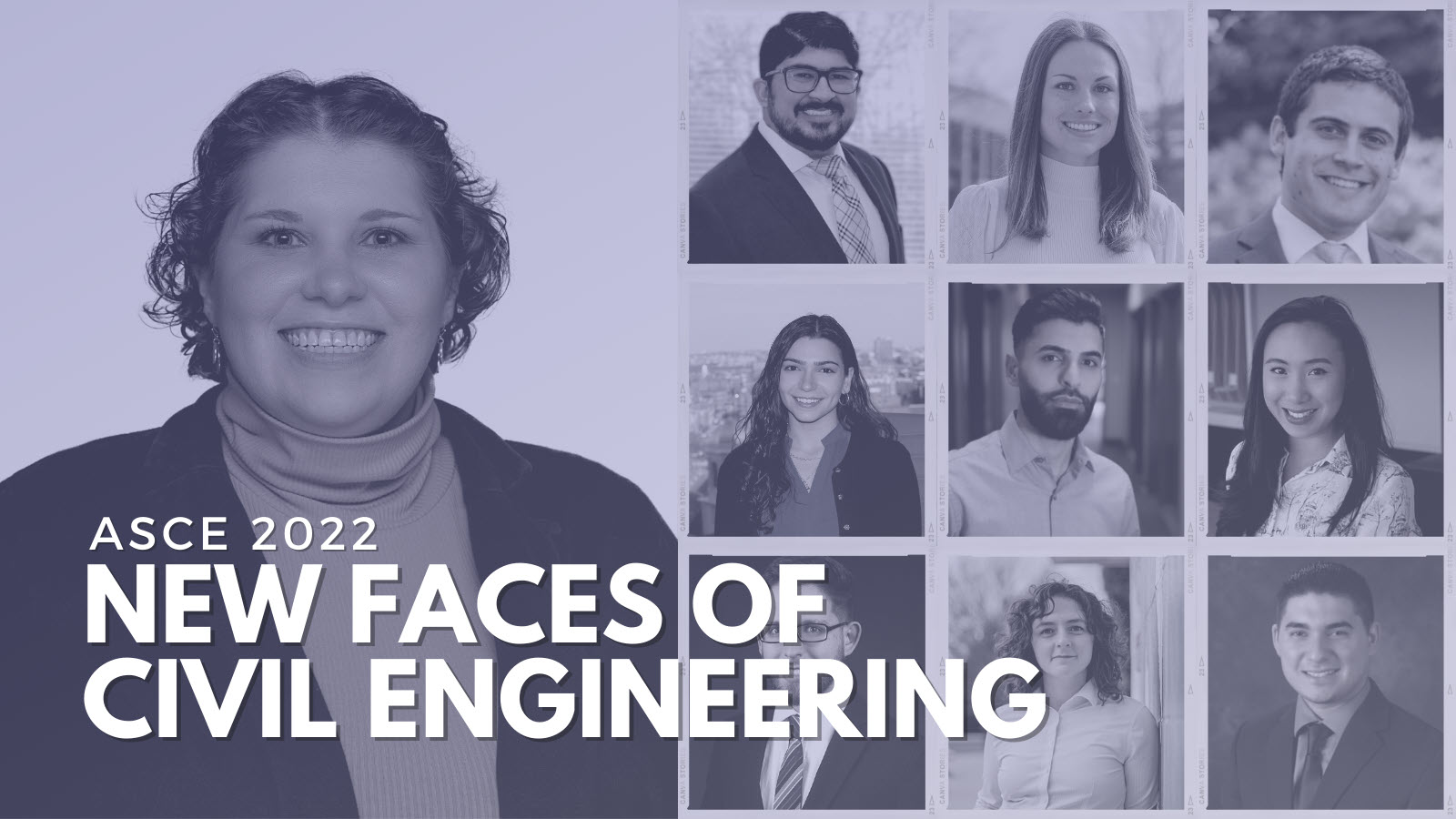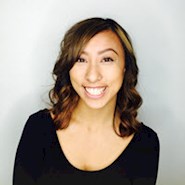
Name: Katie Swank Kelly
Credentials: EIT, A.M.ASCE
Job title: Bridge Designer
Employer: Barge Design Solutions
Location: Peachtree Corners, Georgia
Current ASCE role: Georgia Section administrator, Georgia Younger Member Group board, Region 5 Younger Member Advisory Council chair, Concrete Canoe Competition Committee corresponding member, and practitioner advisor for Kennesaw State University and Savannah State University
College: Mansfield University, Fairmont State University – bachelor’s degree in civil engineering technology
They say there’s no single path to becoming a successful civil engineer. So far for Katie Kelly, it’s been more about crossing bridges.
When she was in high school, she began losing her hearing. The diagnosis? Moderately severe bilateral sensorineural, meaning it impacts both ears and, “most people sound like Charlie Brown's parents to me,” said Kelly.
Being hard of hearing runs in her family. Her mom was one of 16 kids with 14 of them experiencing hearing loss. So she did her best to adjust to these new circumstances.
Pursuing a normal high school social life often meant responding in conversations with unrelated remarks or looking to others for cues on when to laugh. While many kids didn’t have the patience for or awareness of Kelly’s needs as a Deaf person, the friends she had were understanding.
She got pretty good at lip reading. And while it wasn’t entirely accurate, it was helpful.
“Most people know hearing loss through elder relatives or from noise exposure,” Kelly said. “Speaking louder or yelling still sounds like muffles to me and does not provide clarity. Combining what I hear with what I see on people’s faces and lips is how I hear.”
She also began to struggle with enunciating words as she lost the ability to hear herself. To assist in her speech development, she joined her high school debate team.
Finally, when she turned 18, Kelly received her first pair of hearing aids through a state-funded program. After crossing a bridge that seemed to span for miles on end, she’d finally made it to the other side. Then it was on to crossing the next one – college.
While she’s always had a knack for math and physics, civil engineering wasn’t really on her mind just yet. She wouldn’t be introduced to it until she was in her early 20s.
Kelly began college, focusing on her initial love of music. Later, she decided to switch to mathematics. But she ultimately dropped out due to the financial strain. That’s when she ended up working as an administrative assistant at an engineering firm. And that’s where everything clicked. Civil engineering was for her.
But even with things seeming to fall into place, more obstacles laid ahead.
At the end of 2019, Kelly began suffering from suspected multiple sclerosis – an autoimmune disorder that impacts the brain and spinal cord. By 2020, that would get more severe. She had to use mobility devices, like a cane or a walker, to move around. The inflammation and pain were so severe, it was difficult just to walk to the mailbox.
Adding to all this – ongoing mental fatigue, more financial stress, and a divorce – Kelly experienced a state of burnout she’d never had before. It even got to a point where she was crying in her boss’s office.
Still, she remained resilient and had amazing colleagues standing by her along the way. Now, she’s feeling much better and is back out in the field, crossing real bridges and not just figurative ones.
“[It was] definitely a challenge navigating. That event led to me being more of an advocate for disabilities and inclusion, just looking around and realizing how inaccessible things really are,” said Kelly.
With that mindset, it’s her mission, vision, and ambition to change the world. That all begins with a wholehearted passion for STEM outreach, providing early civil engineering exposure to kids. She recently spoke with the Civil Engineering Source about her career.
Civil Engineering Source: What’s the civil engineering accomplishment you’re most proud of so far in your career?
Kelly: My biggest accomplishment was getting my engineering degree as a first-generation college student.
But the one I’m most proud of happened this past fall. Along with one of my colleges, I spoke to a class of girls during Hispanic Engineers Week. We were discussing what it was like to be in college and in a male-dominated industry. At the end of the event, we asked them what they learned. One girl said, “I learned I could be anything.” It was the sweetest moment – to have that impact on another kid and let them know that not only is there room for them in our industry, but to be able to support them in whatever they want to be.
I’ve spent some time speaking with college students as well, not just trying to get people into STEM, but to retain them and set realistic expectations about what it’s like being a woman in a male-dominated field. The culture we’re surrounded by, or the lack of diversity, are things that you don’t quite get a grasp of until you’re in the industry. Being able to talk to students and having those connections is really important to their career growth.
Source: What’s something about you that might surprise most civil engineers?
Kelly: I think the most surprising thing is that I’m a musician. I play the alto saxophone. It helps a bit in my work. Having the ability to naturally divide mathematically and to apply that creativity and innovation that I have from a music-dominated brain is advantageous.
I’m also Deaf, so most people are shocked when I tell them that. It’s not too bad in the office. With people wearing headphones, I get startled easily because I don’t hear people walking up on me.
When we went virtual, it was a challenge with Teams before they had their automatic captioning worked out. Over the last two years, they’ve done incredible work expanding and providing better accessibility. So, it’s not nearly as bad now.
I’ve had to go through some hoops with my company to get accessibility options for our live casts, like closed captions. It was a little bit of a struggle with the pandemic and people wearing masks. My company was great, and they did provide clear masks. We gave those a try for a while, but they weren’t as successful as we would’ve liked.
The biggest impact my deafness has had so far was when I was a student and having a sign language interpreter at something like an ASCE conference. There were moments when I was attending a Student Leadership Workshop where you had to break into groups, and no one wanted to sit with the deaf kid who had an interpreter. Dealing with those were kind of like a precursor to what it would be like in our industry because it’s more conservative and there can be some resistance to change.
Not only am I coming in as a woman, but I’m also coming in as a disabled woman. I need accommodations. I have different barriers that I face. That has definitely been a challenge.
I haven’t spoken to many people in our industry who have disabilities. In the past I didn’t really consider myself a disability advocate, but over the last couple of years it’s something I’ve embraced. I’ve realized having that alternative view and facing those adversities gives you a different perspective. That is welcome and has to be included in our industry. And if I’m not going to be the person who speaks up, who is?
Source: What makes you excited to be a civil engineer in the 2020s?
Kelly: There’s so much attention right now on our infrastructure with the Infrastructure Investment and Jobs Act passing. We had quite a few disasters with bridges in our nation over the last couple of years. So the fact that the public has a better understanding of how critical funding in these infrastructure projects [is] makes me excited. We’re going to be focusing on such a vital aspect of public safety.
I’ve had some exciting opportunities to work on some alternative delivery and design-build projects. They’re innovative methods that we could use for different reasons, whether it be safety or avoiding road closures. These types of projects are becoming more popular. So I’m excited for the potential to work on one, to keep on top of that innovation, and to be able to serve the public not only for safety needs, but also reducing any negative impact we have on the public.



